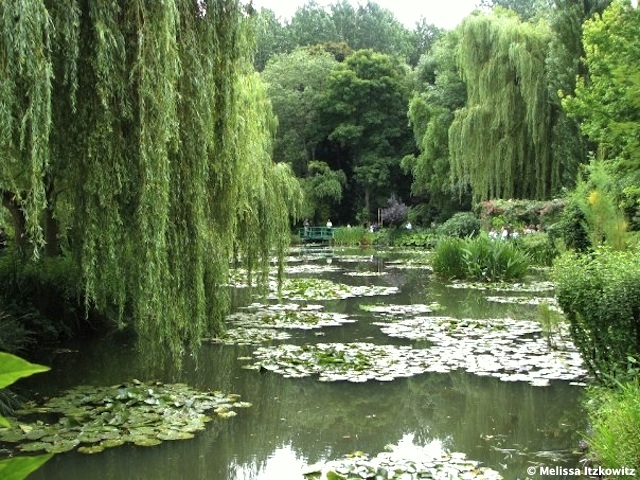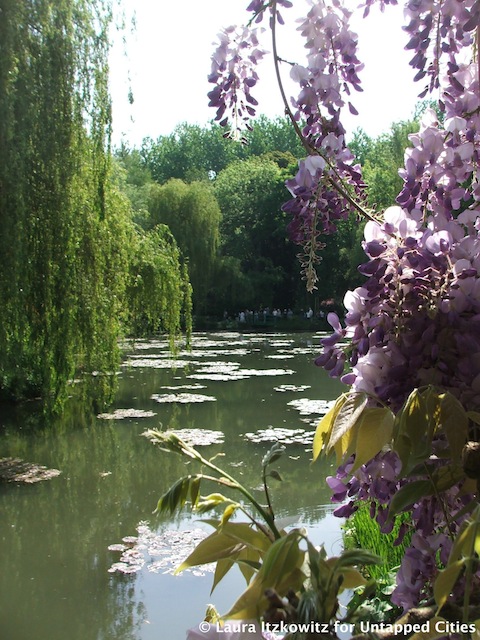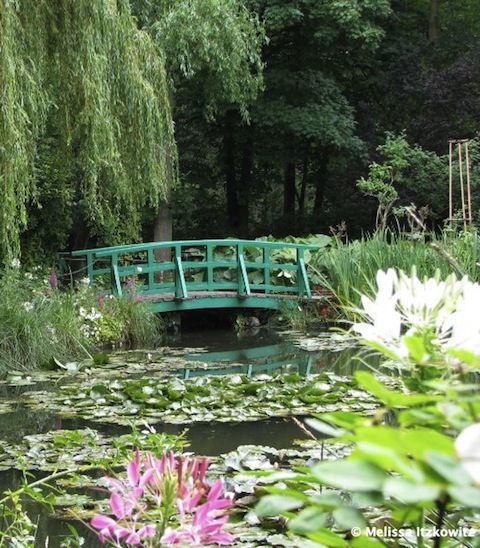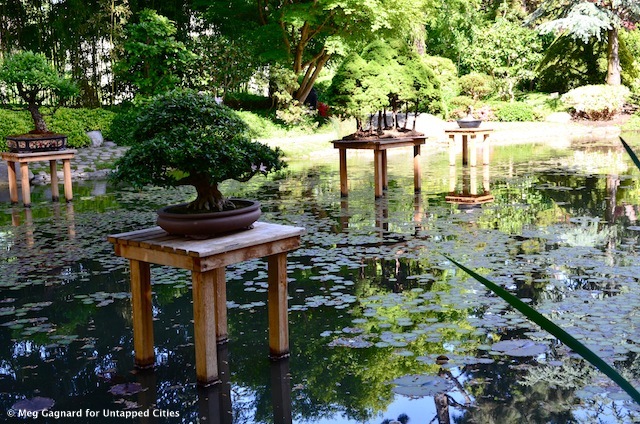Untapped Cities is proud to introduce our newest partner Vingt Paris, a blog devoted to the 20 arrondissements of Paris. They’re purveyors of the city’s secrets, advocates of apéros, and about opening doors to the true places and real people that illuminate the City of Light. As part of their relaunch, Vingt Paris is introducing some new elements, such as the Paris Life section that covers everything from Apartment Stories to Unspoken Rules; they’ve reorganized older content so it’s easier to find. And they’re introducing Paris Personnages, seven personalities that capture the spirit of Paris and Parisians, and that are your personal guides to the bakeries, shops, restos and resources that real Parisians use.
I’ve been dreaming of exploring a number of Japanese gardens hidden around the city that I’ve come across. Many of these gardens I have stumbled on by accident, stowed away behind museums or on rooftops, waiting to be discovered.
In the 19th century, ukiyo-e woodblock prints began to arrive in Paris, sparking a craze for all things Japanese (aptly referred to le japonisme). La Pagode Cinema in the 7th arrondissement is a fantastic example of this phenomenon: originally a ballroom, it was built in 1896 in Pagoda style architecture, and restyled into a cinema in 1931. The auditorium is decorated with ornate Edo style frescoes and the surrounding garden is planted with bamboo and guarded by bronze lions. Along with architecture, fashion and art, japonisme also brought Japanese gardens to the City of Light.
To really see the influence Japanism had on French cultural life, it is worth taking a trip out to the Fondation Claude Monet in Giverny, once home to the celebrated Impressionist and site of his famous water lilies. The foundation boasts a series of Japanese Edo-era prints, from which a fascinated Monet took inspiration. Nowhere is this more evident than in his garden. A jardin d’eau, with its Japanese bridge and its flowers and fruit trees native to Japan, it recalls the woodblock prints that Monet collected.
Back in Paris, the banker and philanthropist Albert Kahn, with inspiration drawn from two trips to Japan, first began work on his Japanese style garden in Boulogne-Billancourt in 1897. A Japanese garden still exists there today, behind a museum created in Kahn’s honour, though all that exists of the garden is a large cedar tree.
In 1958, as part of the UNESCO Garden of Peace project, Japanese-American artist Isamu Noguchi created one of the most stunning Japanese gardens in Paris, and the first of its genre to be created by a sculptor instead of a landscape designer. Noguchi clearly used his creative licence in the garden’s design: although traditional Japanese gardens are viewed from only one vantage point, Noguchi added an upper level, allowing the visitor to take in the bigger picture of the garden. The garden is also home to the Nagasaki Angel, originally belonging to the faà§ade of the Urakami Church in Nagasaki. It miraculously survived the devastation of the city in 1945 and was donated to UNESCO by the Japanese government in 1976.
More recently-built jardins japonaises include the Musée du Panthéon Bouddhique garden. An annex of the Musée Guimet, the museum was converted out of Émile Guimet’s hà´tel particulier to house his collection of Asian art. The Japanese garden and tea pavilion were added behind the museum in 1992 and 2001, respectively. The garden is small but quaint, calm and orientated around a makeshift stream that burbles around stepping stones. Tea ceremonies are held at the Pavilion from time to time so it’s worth keeping an eye on the program.
Japanese gardens are designed to be controlled environments, providing a haven of calm and tranquility throughout the year, whether viewed from under the garden’s cherry blossoms or from a window on a snowy day. By their very nature, Japanese gardens fit perfectly into the density of Paris, and provide a welcome relief to the hustle and bustle of the city, whatever the season.
By Anna Bromwich for Vingt Paris










